by Cora Angier Sowa.
Percy Grainger's appreciation of American folk song
Percy Grainger was a composer with many interests. One of these was the collecting and arrangement of folksongs of various continents, and his work with English, Scandinavian and South Pacific song is well-known. In the years he spent in America, he developed an interest in the music of America. In a previous blog, Percy Grainger in the Ozarks, we spoke of Grainger's appreciation of the mountain music of the U.S., as exemplified by his performances of the old song "Arkansas Traveler." But he also became interested in the songs of the Native Americans, or "Indians," as they were then called, and in the complex forms of the music of African Americans. In these pursuits, he was influenced in particular by the work of Natalie Curtis Burlin, intrepid collector and writer, who overcame hardships, both physical and bureaucratic, to record first the music of the Hopi of Arizona and other Native American tribes, then the elaborate part-singing of the Blacks at the Hampton Institute in Virginia.
Natalie Curtis' flight from her wealthy New York upbringing
Natalie Curtis was born into a wealthy New York family in 1875. Her family had a brownstone on Washington Place, and her father was a distinguished physician. Her brothers were Harvard-educated; Natalie and her sisters did not, as Victorian women, have that opportunity. However, Natalie showed an early talent as a musician, practicing both voice and piano obsessively for hours each day. One of her piano teachers was Ferruccio Busoni (with whom Grainger also briefly studied). She was well on her way to becoming a well-known concert pianist, but in those days she was expected to get married, and married ladies of her social class did not have careers.
Natalie's brother George became a librarian at the Astor Library in New Haven, Connecticut. However, he suffered from asthma, and went West for his health, as many ailing Easterners did. He found work as a ranch hand in Arizona, where he regained his strength. Natalie meanwhile, worn down from over-practicing as well as emotional stress, suffered a complete breakdown. She too, fled to the Southwest to join her brother, and he became her constant companion in her subsequent travels among the Hopi. (Incidentally, there is no connection between this Curtis family and the photographer and ethnologist Edward Sheriff Curtis, who was born on a farm in Wisconsin, where his father was a minister and farmer. They only coincidentally shared a surname and a common interest in documenting Native American life.)
Cowboy life and song with brother George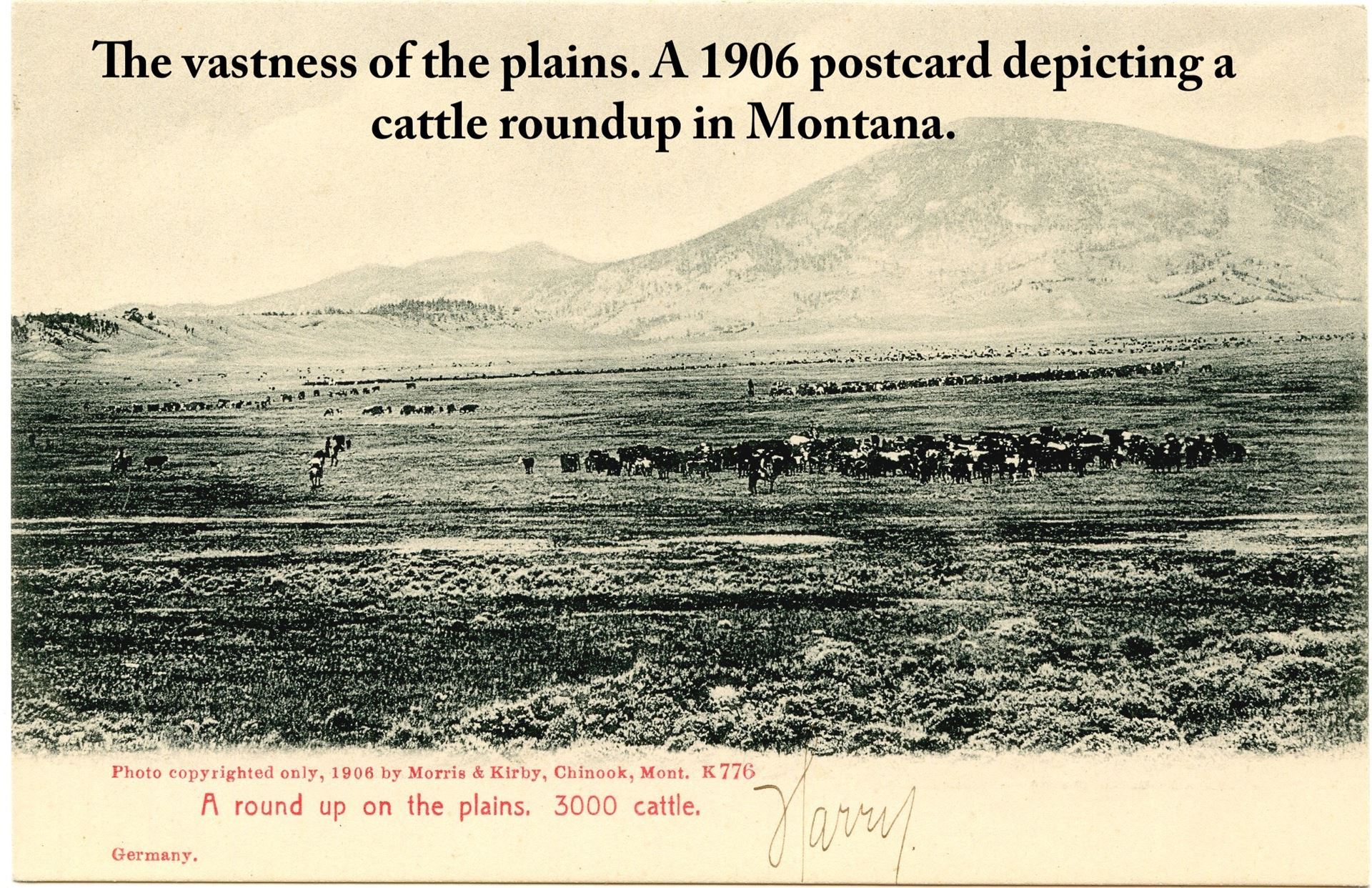
Natalie shared the outdoor life with George, traveling by horse and sleeping under the stars. In 1920 she would write in The Nation:
I have ridden with cowboys, sung with them, seen round-ups and bronco-busting, spent months amid a thousand head of cattle on one of the loneliest ranges in Arizona. When the men left to "ride the range" and I was alone in the cabin with a Colt revolver for companion; when I heard the plaintive sob of the wood pigeon in the cedars . . . Then I understood the note of utter loneliness that sounds in many a cowboy song,
Cowboy music is not just one genre
We have to wonder which cowboy songs she heard. Doubtless the men sang only "cleaned-up" versions for her, suitable to sing in front of ladies. One of the most famous, for example, "Streets of Laredo," had an original version, based on the English ballad "The Unfortunate Lad" (also known as "The Unfortunate Rake") in which the hero is dying not of a gunshot wound, but from venereal disease, one of the most common causes of death for cowboys; the other most common cause was lightning strikes. The cowboy song originated in songs sung or played at night to soothe the thousands of cattle on long drives from Texas to the railheads in Kansas City or South Dakota, to keep them from stampeding at some sudden noise.
The cowboys themselves were a mixed lot — White Confederate veterans, freed Black slaves, Mexicans. Their music varied, too, from old Appalachian ballads to contemporary show tunes to impromptu compositions. (Natalie, speaking of American folk music in her Negro Folksongs writes of "the songs and ballads of the British Isles, still held in purity in the mountain fortresses of the Southern States, though strange versions of them crop up in the cowboy songs of the frontier.") William H. Forbis, in The Old West: The Cowboys tells us that one cowboy sang Presbyterian hymns, another played the violin, and that some songs "had mournful tunes but no words and were termed 'Texas lullabies'." (On a personal note: My great-uncle Albert Powell was a Texas cowboy in the 1890's, working on long cattle drives. His father, my great-grandfather James Powell, was a Baptist minister and rancher, so Albert probably knew lots of Baptist hymns, but I don't think Albert himself was particularly religious. I wish I knew what songs he sang to soothe the bovines.)
Natalie made an arrangement of an old cowboy song, which she simply titled "A Cowboy Song." It was performed on April 4, 1920 at the Musical Art Society of New York. Also on the program were two of Natalie's arrangements of Native American melodies, which she collected in the next phase of her life. These arrangements were the Pawnee "Victory Song" and the Cheyenne "Dawn Song."
Charles Lummis introduces Natalie to Native American culture
Natalie and George visited Los Angeles, where they met Charles Fletcher Lummis, journalist and activist in Native American rights. Lummis, one of the founders of the Southwest Museum of the American Indian near Pasadena, was born in Massachusetts and educated at Harvard, where Theodore Roosevelt was one of his classmates, a connection that would prove advantageous to both Lummis and to Natalie Curtis. Lummis was a founder of the Sequoyah League, which fought for the rights of Native Americans to keep their own culture, which was under siege by U.S. Government policy.
In Los Angeles, Lummis invited Natalie and George to attend a performance by Navajo singers from Arizona, and his stories of tramping though the Southwest ignited her interest in the region.
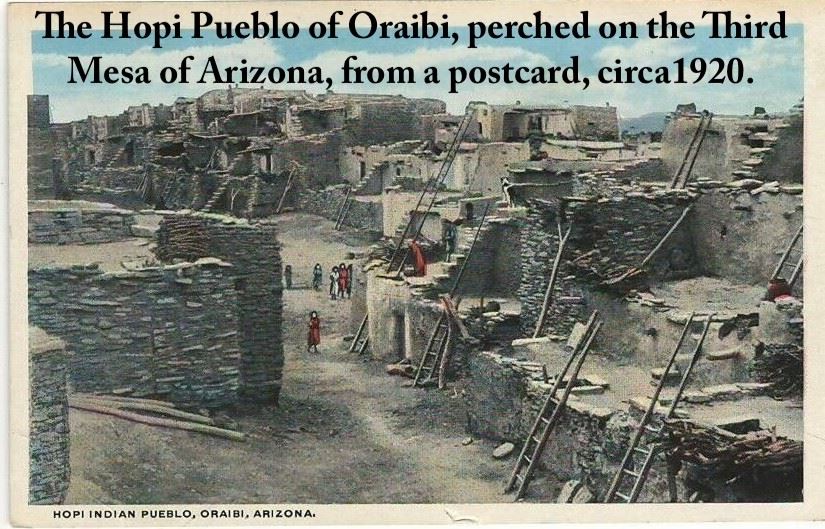 The Indians' Book
The Indians' Book
Natalie and George Curtis arrived in Yuma, Arizona in 1903, and they set forth into the desert, She brought with her an Edison recording machine. She made contact with the Native people, and strove to gain their trust. Her arrival was controversial, as the policy of the U.S. government, under the Bureau of Indian Affairs, was to "civilize" the "savage" Indians by forbidding them to speak their own language, sing their songs, perform their sacred dances, wear Native clothing, wear their hair long, or keep their Native names. Children were forcibly taken from their parents and sent to distant boarding schools, founded on a military model. The most famous of these was the Carlisle School, in Carlisle, Pennsylvania, founded in 1879. (Its most famous graduate was the remarkable athlete Jim Thorpe.)
Natalie and George eventually made their way to the Hopi pueblo of Oraibi, perched on top of the stone outcropping known as the Third Mesa. There she won the trust of the elders, especially the Chief, Lololomai. The Hopi had songs for every aspect of life — songs for planting crops, grinding corn, putting children to sleep, dancing, watching the dawn, and every chore. Sitting on a rooftop with Lololomai and other singers, she began (in secret, to avoid the BIA), she began to collect and record the Hopi songs. During a visit in the East, Natalie made use of family connections with President Roosevelt to obtain from him a special letter of permission to continue recording the Indian songs and studying their culture.
The Hopi and other Indian cultures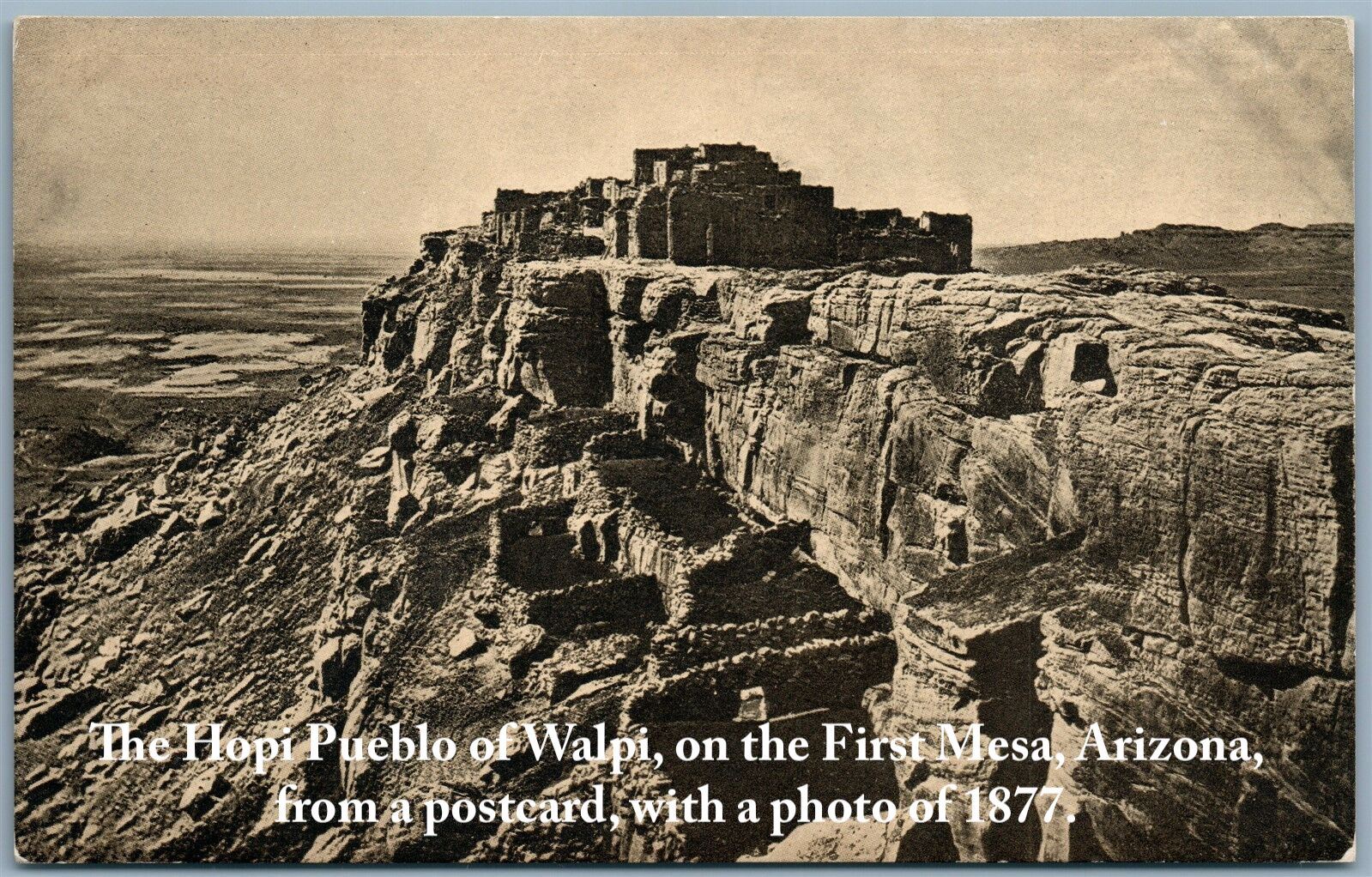
In 1907 Natalie published The Indians' Book, in which she presented not only the songs of the Hopi, but those of Native American tribes from many parts of America, from Maine to the Great Plains to the Navaho and Apache of the Southwest. We find there the melodies, with the words in both the Native tongue and in English, plus extensive essays on the culture of each tribe and details of how the songs were performed. There are work songs, war songs, and dance songs, and songs for every aspect of life. The entire The Indians' Book is available on the Internet.
An unfortunate aspect of Curtis' work was that she was influenced by an "evolutionary" view of the world's people that was already becoming outmoded among anthropologists such as her friend Franz Boas. According to this view, races evolve from a primitive "childlike" state of untaught emotional expression to a state of "civilization." For example, she writes "The Indian's religious thought, uttered with the simplicity of childhood, is born of his recognition of spirit in every form of life ..." and again: "If the Indians' Book can help to a recognition of primitive men of latent capabilities; if it can help ... to herald the day when adult races wisely shall guide child races, and civilization nourish the genius of every people, then will this utterance of the North American Indians be not for the race alone, but for all humanity."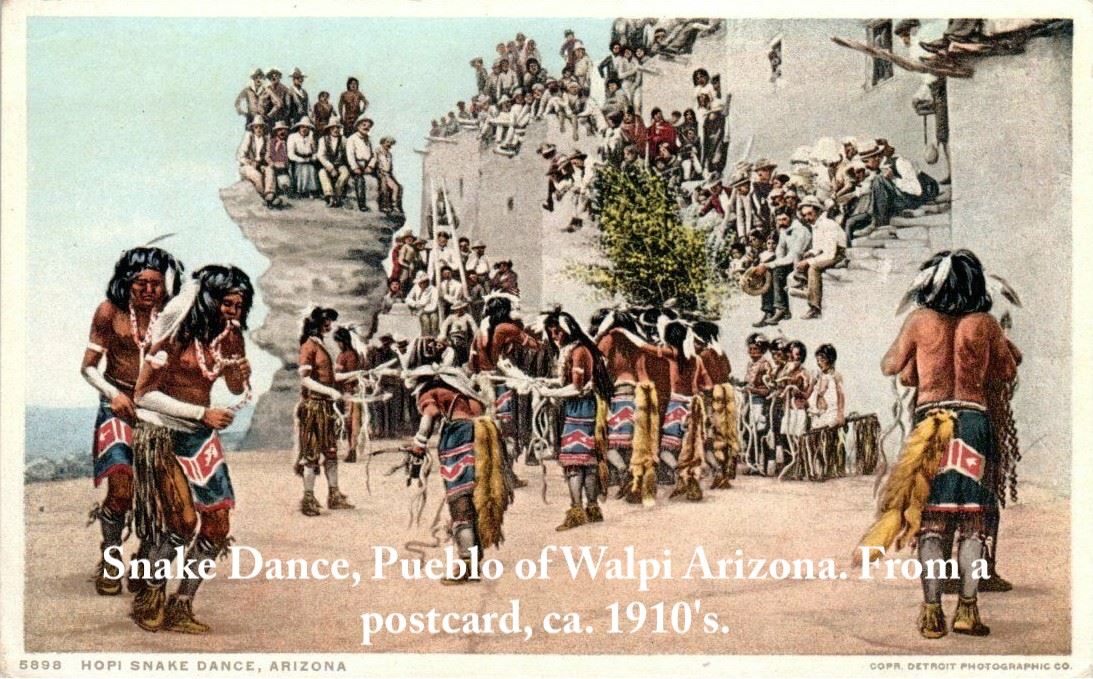 But she nevertheless saw that by becoming "civilized," the modern nations were also losing something of creative artistic genius.
But she nevertheless saw that by becoming "civilized," the modern nations were also losing something of creative artistic genius.
After the publication of The Indians' Book and Roosevelt's intervention, some modifications were introduced into the government treatment of Native American culture, and an exemption was granted for musical and artistic performance.
In August, 1913, Theodore Roosevelt joined Natalie and others at the village of Walpi on the First Mesa of Arizona to witness the Hopi Snake Dance, in which the dancers dance while handling the sacred snakes. Natalie and Roosevelt were seated together in the audience.
Busoni's Indian Fantasy, with Grainger in the audience
In 1915, Ferruccio Busoni composed his Indian Fantasy for piano and orchestra, inspired by Native American songs which Natalie had collected. Natalie wrote a review of Busoni's Indian Fantasy in the October, 1915 issue of Southern Workman, the journal published by the Hampton Institute in Virginia, where she had pursued her recording of Native American, and later, African American songs and folktales. In the review, she recounted how the composition came about, and her meeting with Stokowski, who conducted the piece's first performance.
Natalie met a young Leopold Stokowski when he arrived in America in 1905. She told him about Indian music and shared with him some of the songs she had collected. He listened, she wrote, in "reverent silence," and "was deeply moved, for this music seemed to him the very voice of the 'New World'." When he asked for some little remembrance, she says that she gave him "a silver ornament wrought into art-shape (a flower form) by some facile though untaught Navaho Indian silversmith." (This is, of course, nonsense, like her "evolutionary" ideas. The silversmith wasn't untaught. He would have learned his craft from an older smith, who would have been taught by his own teachers!)
A few years later, Natalie was asked by her old mentor, Busoni, for a few Indian melodies that he could work into "a rhapsody or fantasy for piano and orchestra." The result was Busoni's Indian Fantasy, which was performed by the Philadelphia Orchestra conducted by Stokowski. At the rehearsal on February 19, 1915, Natalie sat with Madame Busoni on one side and Percy Grainger on the other.
The piece is in three movements, a free "Fantasia," a Canzona ("The Blue Bird Song"), and "Finale." Musically, it is impressionistic. Natalie wrote:
With the first bars of the orchestral introduction (based on a song of the cliff-perched Hopi Indians) the walls melted away, and I was in the West, filled again with that awing sense of vastness, of solitude, of immensity. The boundless horizon, the endless stretch of plains and deserts, the might of the Mississippi — all this, the spirit of the real America (a spirit of primeval latent power) Busoni had felt while traveling across the continent, and now had tried to reproduce. . .
With all the resources of piano and orchestra Busoni conjures before us a succession of different pictures and ideas — primitive America — the sweep of the prairie winds, the roll and gleam of waters, the aerial song of birds . . .
Natalie remarked on the lack of drums in the piece, which are so characteristic of Native American music, but she adds that "this characteristic feature enters at the last, and with perhaps the greater dynamic effect through having been withheld at first." One Indian theme, she says, "which Busoni has expanded into a broad and stirring melody, and which he calls 'The Chant of Victory' seemed to him possible for adaptation as one of our national anthems."
Stokowski hopefully thought that the Indian Fantasy would have a great influence on the future of Western music. Natalie quotes his words after that first performance: "I consider this the most important new step in the development of music since DeBussy first began to break fresh paths in tonal and harmonic relations. It will have a very deep influence on the trend of music in the future."
You can listen to a YouTube performance of Busoni's Fantasy by pianist Giovanni Bellucci (Fantasía India Op.44, para piano y orquesta. Orquesta Sinfónica Nacional de la RAI Director: Daniele Callegari) and make up your own mind about its effects.
The Hampton Series of Negro Folk-Songs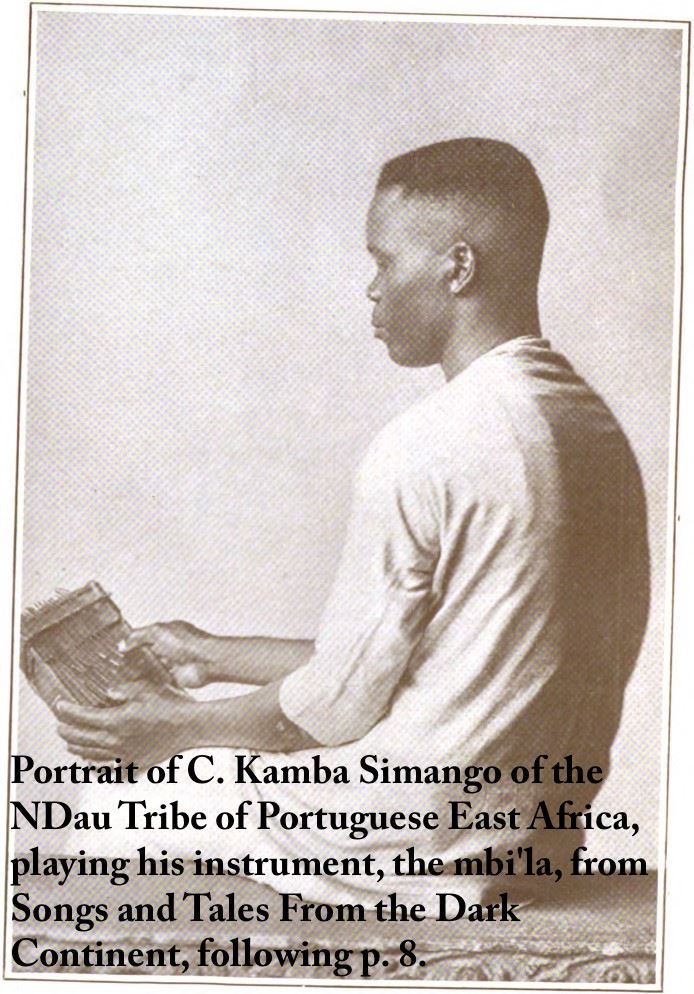
Natalie first came to the Hampton Normal and Agricultural Institute in Virginia in 1904, with the intent of studying and recording songs from the great number of Indian students from many tribes who were in residence at the time.
The Hampton Institute was founded by General Samuel Armstrong Chapman in 1868 to provide education for newly freed Black slaves. One of its earliest graduates was Booker T. Washington, founder of the Tuskegee Institute. It is today's Hampton University. It was coeducational from the start, with the women being taught domestic skills. In 1878 Hampton began to accept American Indian students, eventually enrolling applicants from some sixty-five different tribes. Subversively, Hampton encouraged the Native Americans to perform their folk music, which government policy tried to suppress. Unfortunately, the program ended in 1923, when it was feared (this being in the pre-civil rights South) that Black and Native students were fraternizing too much. The aim, it was said, to integrate the Indians into white, not black society!
While at Hampton, Natalie undertook to help the Indian students learn each others' languages, while transcribing their music for her own project. These songs were included in her Indians' Book.
African American part-singing
It may have been the anthropologist Franz Boas, who was a friend of Natalie, who first suggested to her the idea of doing for the music of the African Americans what she had done for the Native American.
Natalie toured the South meeting with Black communities where African heritage was preserved, although her actual recording was done at Hampton. She describes visiting the Calhoun Industrial School where she attended "a great meeting of colored people" that was "held one year to listen to discussion by Northern white scholars concerning the advancement of their race." The attendees, for their part, treated this event like a camp meeting, hitching their animals in the woods and gathering in a big clearing. Suddenly they burst into spontaneous song. She goes on to say, "And as usual with Negroes, this was extemporaneous part-singing, — women making up alto, men improvising tenor or bass, the music as a whole possessed so completely by them all (or so utterly possessing them!) that they were free to abandon themselves to the inspiration of their own creative instinct." (From the Hampton Series of Negro Folk-Songs Book IV).
Of particular interest to Natalie at Hampton was the elaborate part-singing, the improvisational a capella song. To record each part separately was a challenge, because each singer was unable to sing without the simultaneous singing of all the other parts. She adopted the method of putting the recording device next to the singer whose voice she was recording, while the others sang in the background, audible to the first singer but not picked up by the machine. Then she repeated the process for each singer.
The result of Natalie's effort was the four-volume Hampton Series of Negro Folk-Songs (1918-1919). As with the Native Americans, there were songs for every aspect of life. There were the well-known spirituals, but also work and play songs, like the "Peanut-Pickin' Song," the "Hammerin' Song" from the mines of Virginia, "Chicka-Hanka" (a railroad workers' song), and "Liza-Jane." The complete series of Hampton Institute Negro Folk-Songs, Vols. I-IV, is available on the Internet.
In a 1912 essay, Natalie identified "Four Types of Folk-Song" in the United States: Native American, African American, mountain white, and cowboy.
Songs and Tales from the Dark Continent
There were in residence at the Hampton School students who were from Africa, and Natalie made a special project of recording music that they brought from their native tribes. Her two principal informants were C. Kamba Simango, from the Ndau Tribe, Portuguese East Africa, and Madikane Cele, of the Zulu Tribe, Zululand, South Africa. The result was Songs and Tales from the Dark Continent, published in 1920. In this music, too, she found complex polyphony and part-singing, solo voice followed by chorus, and rhythmic syncopation. There were also native instruments, indluding the drum and the mbi'la, a wooden box with metal strips tuned to different lengths, plucked by the thumbs. Various forms of hand-clapping were also practiced. The tonal system did not correspond to the Western scale, and was difficult to reproduce on the modern piano.
Natalie published Songs and Tales from the Dark Continent in 1920. The work comprised not only songs, as in The Indians' Book, but folk tales such as "The Hare and the Tortoise" and "The Hare and the Baboon." Included in Songs and Tales are detailed directions for performance, illustrated by the (relatively short) directions given on the example of the "Dance for Girls" illustrated here:
Only the two dancers can clap this clap; though they as well as the onlookers may also clap all the other claps. The first beat of each bar carrying the words of the song and accented by the two emphatic beats of the dancers, is made to stand out vigorously from the rest of the song; the following syllables, accompanied by the more rapid hand-clapping, sound somewhat parenthetical in character.
Curtis' Songs and Tales from the Dark Continent is also available on the Internet.
Grainger's review of Curtis' work
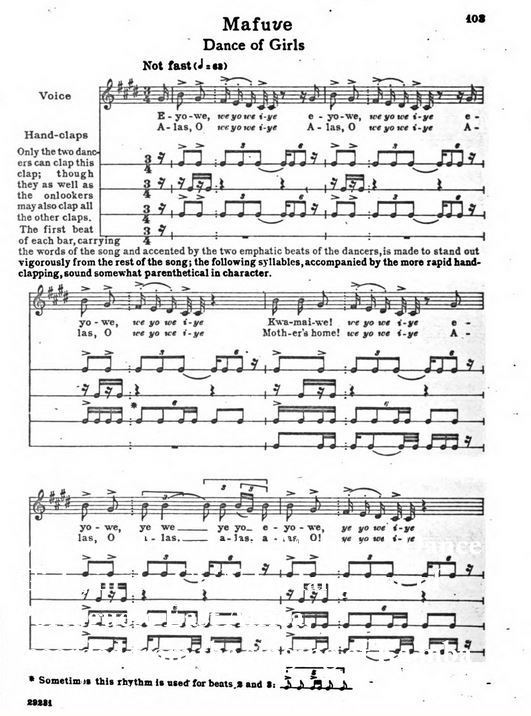 Percy Grainger wrote a review of Natalie's work on African American music in the New York Times Book Review of April 14, 1918 (which is reprinted in Malcolm Gillies' and Bruce Clunies Ross' Grainger on Music). It was titled "The Unique Value of Natalie Curtis' Notations of American Negro Folksongs."
Percy Grainger wrote a review of Natalie's work on African American music in the New York Times Book Review of April 14, 1918 (which is reprinted in Malcolm Gillies' and Bruce Clunies Ross' Grainger on Music). It was titled "The Unique Value of Natalie Curtis' Notations of American Negro Folksongs."
Grainger terms music composed with the help of written notation "conscious music," that which is composed without written notation "unconscious music." He saw that both kinds of music have positive qualities lacking in the other, and thought, according to the common belief, that the "primitive" or "untaught" music would eventually die away, and should be preserved as a historic artifact. He writes:
It would probably be safe to assert that no composer of conscious music seems ...capable of creating tunes of a certain indescribable melodic fragrance that abounds in almost every branch of unconscious music! On the other hand, unconscious music (very naturally) rarely, if ever, rises to the heights of harmonic intricacy and subtlety native to conscious music.
Grainger recognizes Natalie Curtis' unique ability to record and explicate the improvisational part-music of the Blacks. He writes that
...the problem is one calling for the sharpest of ears, the most alert of musical mentalities, the warmest and most expansive of racial sympathies. But Natalie Curtis-Burlin has all these qualifications in a superlative degree, as she has amply shown in her previous remarkable musical and literary accomplishment, The Indians' Book.
Dedication of a song to Percy Grainger
Natalie dedicated one of the songs in the Hampton Series, "God's A-Gwine Ter Move All De Troubles Away," to Percy Grainger. She writes:
"To Percy Grainger (who loves this song), Composer, Pianist, Folk-lorist, This record is dedicated with warm appreciation of those qualities of artistic insight and human sympathy that make him a firm friend of the Negro and of Negro music; for the unconscious art of simple men finds reverent recognition and buoyant response from the genius whose own sunny nature makes all who know him believe that
"God's A-Gwine Ter Move All De Troubles Away."
She recounts a story about a concert of Black music given by Black musicians at the Musical School Settlement for Colored People in New York, where Grainger comforted a young woman pianist who totally flubbed her performance and left the stage feeling a failure. Grainger immediately went backstage:
Hurrying behind the scenes he met the dejected little pianist as she came from the stage. "Don't mind," he said comfortingly, "we have all done the same thing; every artist has. That's part of a public career. Go back and play again. Don't you hear them applauding? This time you'll play better than ever!" Thus encouraged, the girl reappeared before her audience and now came off with flying colors. She had never met the great pianist before, but he marked a turning-point in her life, for he had helped her to change failure to victory.
Grainger's arrangements of Native American songs
Grainger made arrangements of several of Natalie Curtis' works (and Natalie herself also composed and performed original compositions based on both Native American and African American themes). Grainger's arrangements were:
-
From Songs and Tales of the Dark Continent, "Two Songs of Love": Iga'ma lo Ta'ndo (Zulu), Lu'mbo Igo Lu'do (Chindau), 1920;
-
From Negro Folk Songs (Hampton Series) "Negro Lullaby" for mixed voices (1934), for string orchestra (1939);
-
"Matachina Dance" from Memories of New Mexico (Spanish-Indian melodies from Santa Fe, New Mexico) (1925), employing the following musicians: Group 1 (on platform): oboe, clarinet, bassoon, horn, harmonium, harp, piano #1, 2 violins, viola #1, cello #1;
Group 2 (behind platform): flute, piano #2, viola #2, cello #2, bass;
-
"Lenten Chant (Crucifixion Hymn) and "Sangre de Cristo" ("Blood of Christ"), also from Memories of New Mexico (1925), using the following: Flute (also piccolo), oboe, clarinet, bassoon, 2 horns, timpani, bells (tubular, staff), metal marimba, harmonium, piano (4 hands)+ad lib., harp, strings.
Curtis' marriage and death
In 1916 Natalie moved to Santa Fe, New Mexico. New Mexico was being promoted by the Atchison, Topeka and Santa Fe Railway as a cultural destination, and a colony of artists and writers was becoming established in Santa Fe. These included a number of independent women who, like Natalie, had fled restrictive lives in wealthy or upper middle class families on both coasts. Their stories, including Natalie's, are told by Lesley Poling-Kempes in Ladies of the Canyons (2015).
In Santa Fe, Natalie met and fell in love with modernist artist Paul Burlin, ten years younger than herself. They hoped to marry in her hometown of New York, with her family and her New York friends. But her mother was horrified. Not only was he younger than her, but he had no respectable profession such as banking or medicine, did not even know anyone in the Social Register, and besides he was Jewish! So they married in Santa Fe, and moved into a modest adobe cottage, where they lived happily.
After the First World War, the U.S. art world turned away from modernism, and in 1921 the Burlins moved to Paris for the sake of Paul's career. Natalie continued a career as a lecturer on American folk music. In a lecture during a conference at the Sorbonne, which she gave in French, she refuted the opinions expressed by the Harvard music professor Edward Burlingame Hill, who claimed that the music of the Indians and Negroes was not American folk music because those peoples were not truly American! She pointed out American Negroes were "good enough 'Americans' to die for American ideals in our wars" and had a long tradition of folk music and songs "that are the very voice of our South." She sang some Native American songs, and the European audience was, she later said, "electrified."
On the evening of October 23, 1921, after an afternoon at the theater, Natalie was getting off the bus in the pouring rain, when she was struck by a speeding automobile driven by a doctor going to a medical emergency. He stopped, but Natalie died at the hospital. She was just forty-five years old and was at the height of her career.
The right results for the wrong reasons
Natalie Curtis and Percy Grainger both subscribed to the "evolutionary" theory of civilization, according to which "primitive" people progressed from "childhood" to "civilized" adulthood. The fact that the peoples being studied had no writing, but improvised stories and songs, reusing phrases and episodes to fit the context was taken to show that these people were simply inspired by some kind of emotional instinct. The work of Milman Parry and Albert Lord with Serbo-Croatian and ancient Greek epic lay in the future. Those scholars laid the groundwork for a knowledge of the nature of oral transmission and composition (and recomposition) that uses formulaic language and formulaic melody to transmit a rich cultural heritage. The epic poems we know as the Iliad and Odyssey were handed down orally, with constant recomposition, for hundreds of years before a version of each was written down (the melodies that went with them are lost). Yet no one would accuse the ancient Greeks of being uncivilized! (The nature of ancient Greek epic is also treated in my own Traditional Themes and the Homeric Hymns, 1984.)
The research by Alex Haley into his African ancestor Kunta Kinte, and his meeting with the traditional griots, or bards, chronicled in his Roots,the Saga of an American Family, lay even further in the future. Haley emphasized the necessity of the musical accompaniment to aiding the bard in his composition.
Grainger may have been in some ways a racist, with his obsession with the "Nordic race," but his definition of "Nordic" seems to have been rather elastic, having as much to do with a general expansiveness of mood as with biology. For example, as Bruce Clunies Ross points out in "In Pursuit of Nordic Music" in Penelope Thwaites' The New Percy Grainger Companion, he considered the music of the Black jazz composer Duke Ellington and the Jewish George Gershwin to be "Nordic," but not that of Wagner!
But despite misunderstanding of the nature of the music and culture of the Native Americans and African Americans, Natalie Curtis, Charles Lummis, Grainger and others who collected and arranged their songs and folktales did preserve the melodies and stories of these peoples for them during a time when the dominant society was trying to stamp them out. The people, thankfully, are still here. Native children are being taught their own languages, and African Americans are researching their own roots. We are all richer for it.
"The Buffalo"
Beside the main door of the library at Hampton University, a bronze statue was erected, named "The Buffalo," depicting one of the members of the 367th Infantry of the 92nd Division during World War I, named "Buffalo Soldiers" after the Black cavalry who guarded Army forts of the American Southwest in the 19th century. (Ironically, their duty was to guard settlers against attacks by Apache Indians!) The statue is dedicated "In Memory of Natalie Curtis, Beloved by many of different races and colors, 1875-1921."
______________________________________________________________
I thank our own Barry Ould for first making me aware of the works of the fascinating figure of Natalie Curtis, and for providing me with the list of Grainger's arrangements of Curtis' melodies.